Free Pest ID
Not sure what kind of pest or bug you found? The entomologists at MMPC’s Free Pest ID Center can analyze a photo, video, or physical specimen of your mystery pest and provide identification results and suggestions for treatment.
Upload photo/video
Images or video of the mystery pest or insect bites can be submitted online using the form on this page.
For Pest ID requests during regular business hours, an MMPC team member will typically contact you within two hours.
For Pest ID requests outside of regular business hours, we will contact you as soon as possible in the morning.
Drop off/mail
Physical specimens can be mailed to or dropped off at our office on weekdays from 9:00am to 5:00pm.
Place them in a pill container or a sealed Ziploc bag without any chemicals applied. Include a note with your email address and a description of your concerns.
Pest ID requests for physical specimens may take longer. Our team will follow up via email once they have been identified.
Disclaimer
We will never share your personal information. User-submitted images or videos of pests may be used without names or identifiers for educational or marketing purposes. By uploading or emailing content containing photos or videos to MMPC’s Free Pest ID Center, you warrant and represent that (a) you own or otherwise control all of the rights to such content and (b) you grant permission to MMPC, at no cost, to use such content, including a non-exclusive, world-wide, royalty-free license to use, copy, modify, distribute, transmit, and publicly display the content.
Show us your pest
Common pests
What are Ants?
Ants are six legged social insects found almost anywhere on the planet. There are 455 types of ants in North America alone, identifiable by their elbowed antennae and a distinctive node-like structure that forms a slender waist. There are some types of ants that fly, known as Alates, however the majority are wingless.
Ants prefer cool and damp locations and live in large and complex colonies that can consist of millions. Ants build many different types of homes: some make simple little mounds out of dirt or sand; others use small sticks mixed with dirt and sand to make a stronger mound that offers protection from rain. Some ants also live in wood, like termites. Ants eat a wide variety of foods including fruits, vegetables, grains, dead insects, other ants and more, depending on the type of ant.
A single queen ant can live for up to 30 years and can lay millions of eggs over her lifetime. Eggs usually develop into full adult ants over an 8 to 12 week time-frame.
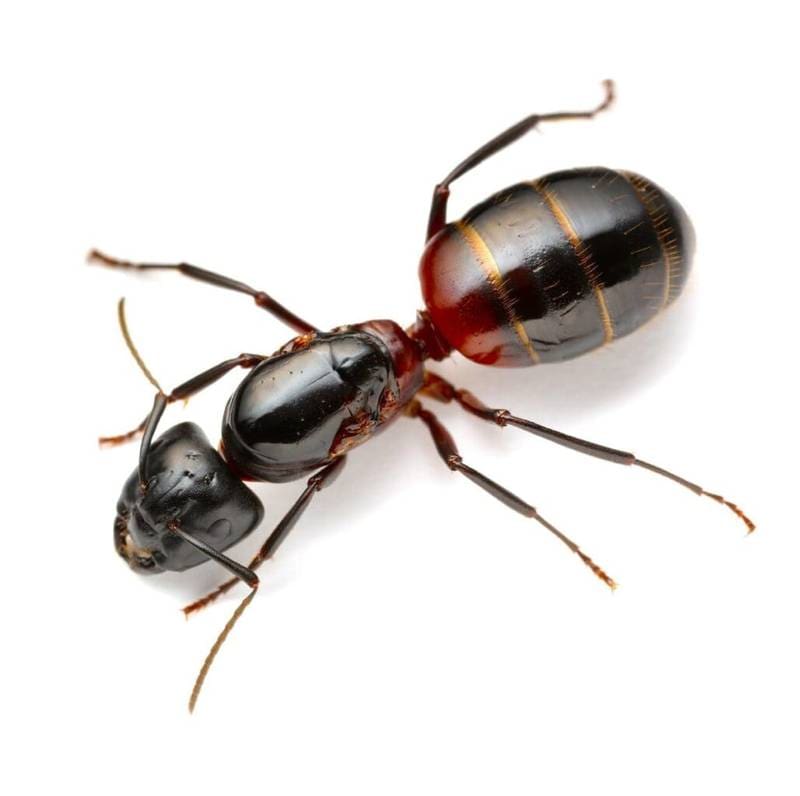
Odorous house ants
1/16″ – 1/8″ long
Brown or black
6 legs, segmented oval body
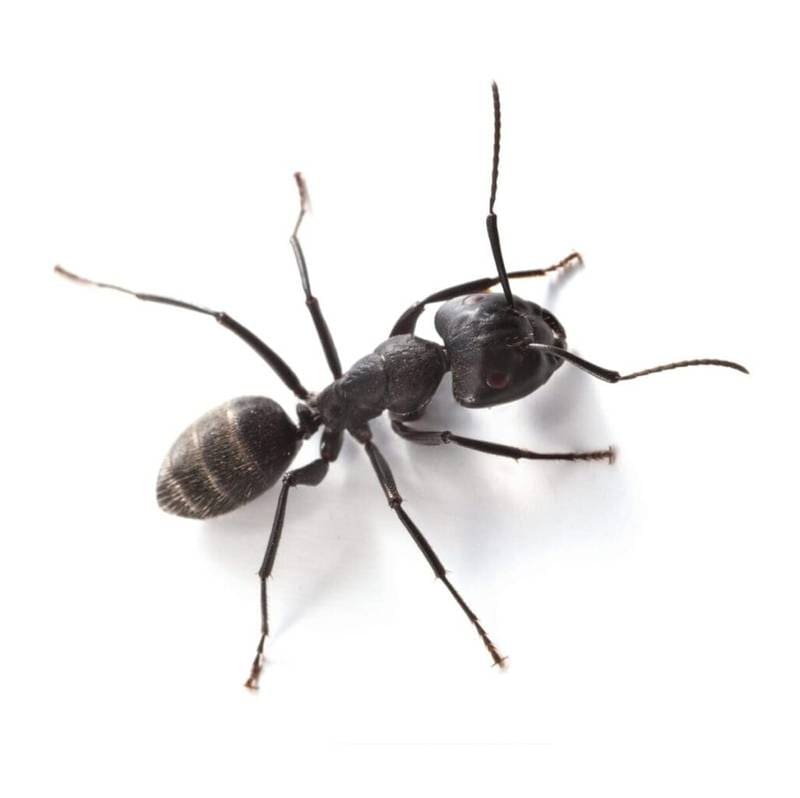
Pavement ants (Workers)
1/16″ to 1/8″ long
Dark brown to black, lighter legs and antennae
6 legs, stinger, parallel lines on head and thorax
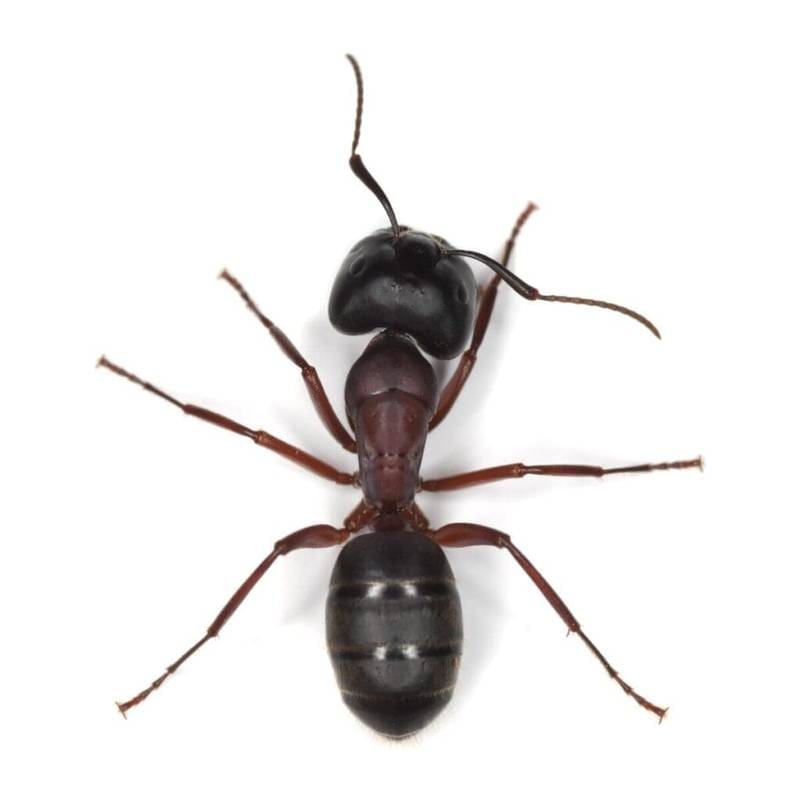
Carpenter ants
5/8″ long
Solid black or brown/black and orange
6 legs, smooth curved thorax
What do I look for?
- The presence of live or dead ants
- Ant mounds or holes in wood
- Large amounts of sand near structural cracks and crevices
Taking a clear photo or trapping a specimen sample is key to being able to identify the species of ant.
In addition, it is important to investigate from where the ants are originating and how they are accessing your living space. In many cases, trimming back bushes and branches near windows is key to effective elimination of an ant problem.
If you have samples of insects that you suspect might be ants, you can schedule a free Pest ID at our office, weekdays from 8:30am to 6:00pm. Proper identification is critical for control.
MMPC Ant Solutions
At MMPC, we realize that because of their diversity, there is no one single solution for how to get rid of ants. MMPC offers customized and comprehensive plans to eliminate ants from the interior and exterior of residences, corporate and commercial spaces.
Our external control plans consists of:
- Bi-weekly perimeter control
- Monthly perimeter baiting
- Quarterly perimeter baiting
Our internal control plans include:
- Initial knockdown and control
- Bi-weekly inspections and maintenance
- Monthly inspections and maintenance
If you suspect that you might have ants or are at risk for ants, we can arrange for one of our certified specialists to inspect your premises.
Our inspectors are available for on-site inspections weekdays, between the hours of 8:00am to 4:00pm.
What are bed bugs?
Bed bugs are six-legged nocturnal insects that feed on the blood of humans or warm-blooded animals. The most common bed bug, Cimex lectularius, is the species most adapted to living with humans.
Adult bed bugs are mahogany to red in color and are flat and oval-shaped. They grow no larger than ¼ inch. Immature bed bugs (nymphs) resemble the adults, but are smaller and somewhat lighter in color and can appear translucent.
Bed bugs can live inside mattresses, baseboards, box springs, headboards, and many other cracks and crevices around the house, and they can lay 200 to 500 eggs during their lifetime. They can also travel on or in clothing, shoes, bags, luggage and more which can cause a bed bug issue. Under normal room temperatures and with an adequate food supply, bed bugs will typically live up to a total of 316 days.

Bed bug
1/4″ long
Mahogany to red-brown (after blood meal)
6 legs, flat, broad oval (unfed), swollen and elongated (fed)
What do I look for?
It is a common misperception that bed bugs are not visible to the naked eye. Mature bed bugs can be seen and identified — they are approximately the size of an apple seed. When changing your bedding, look for signs that bed bugs are present:
- Tiny red splotches or stains
- Shell casings or fecal matter (dust-like particles)
Since bed bugs are nocturnal, another obvious warning sign would be suspicious bites that occurred at night.
Though people experience different physiological reactions to bed bug bites, these bites are usually red and visible and generally appear in clusters of three on arms and legs and can be very itchy. The bite patterns result from frequent disruptions to the bugs during “feeding,” which may cause them to make several attempts in the same area.
MMPC Bed Bug Treatment Solutions
At MMPC, we understand that treating bed bugs requires a comprehensive approach: listening, assessing and diagnosing, so that we can thoroughly and effectively treat and solve your bed bug problem.
Assessing and diagnosing the problem starts with identifying the presence of bed bugs, which we do through the skill of our NESDCA-certified bed bug detection canines. MMPC’s Canine Inspection team is 98% accurate in determining the scent of live bed bugs and viable eggs. The experienced entomologists in our Pest ID Center can also determine (through samples or pictures) whether a bed bug problem exists.
MMPC’s bed bug solutions combine our expert knowledge of bed bug biology and behavior with the application of EPA-approved, all-natural pesticides and other innovative technologies. Our in depth bed bug treatments address not only bed bug causes but also work to prevent future outbreaks and include more than a once over spray of pesticides. We continuously review and assess new developments in the field to offer our clients the best technology and pest solutions available.
Each of MMPC’s bed bug technicians have over 1,000 hours of experience in their specialization. They work closely with each client to assess the extent of the problem and customize comprehensive treatment options, offering help and advice through every step of the process: from pre-treatment to post-treatment clean-up. Each bed bug case is closely monitored until the problem is completely resolved.
What are Carpet Beetles?
The black carpet beetle, Attagenus unicolor, is 3–5 mm long, and a troublesome household pest. Larvae grow to 7 mm in length, are reddish brown in color and are covered with bristles.
The larvae feed on natural fibers, causing damage to carpets, furniture, clothing, furs, stored foods and other plant- and animal-derived items. While larvae do not feed on synthetic fibers, they will feed on blends of wool and synthetics.
Carpet beetle eggs, larvae, pupae and adults may be carried into indoor environments and can reside within the lint that collects behind baseboards, in air ducts, in the stuffing of furniture and in the bristles of old paint brushes. Harboring in these discreet places, carpet beetles may go undetected, and cause extensive damage for long periods of time.

Black carpet beetle
1/8″– 5/16″ long
Shiny black & dark brown
6 legs, carrot-shaped

Varied carpet beetle
1/10″ long
Irregular pattern of white, brown & dark yellow
6 legs, oval shaped
What do I look for?
It is not always possible to distinguish between the damage caused by clothing moths or carpet beetles. Carpet beetles are more likely to damage a large area of a single garment or carpet, while moth damage usually appears as scattered holes through out multiple items.
Carpet beetle larvae feed on a variety of household items including:
- Wool (including carpets and rugs), silk and leather (including book bindings)
- Fur, animal skins, stuffed animals, animal horns and whalebone
- Hair brushes with natural bristles
- Pet hair and feathers
- Food, including spices, grains, flour, peas, beans and powdered milk
- Other dead insects
Infestations in pianos can cause damage to the natural fibers in felts and hammers so that the tone and action of the instrument are seriously affected, requiring the services of a piano technician.
In addition to household item damage, a carpet beetle infestation may result in a physical reaction such as itchy, red welts often in a straight line. It is a common misconception that these are carpet beetle bites. Carpet beetles do not bite humans, however contact with the Beetle hair, saliva or blood can cause an allergic reaction resulting in these bite-like bumps.
If you have a sample of an insect you think might be a carpet beetle, you can submit a specimen to our Pest ID Center, weekdays, from 8:30am to 6:00pm.
MMPC Carpet Beetle Solutions
If you suspect that you are at risk for, or might have a carpet beetle problem, we can arrange for an inspection of your premises by an MMPC certified specialist. On-site inspections can be scheduled weekdays, from 8:00am to 4:00pm.
MMPC’s Carpet Beetle Treatment Program combines a thorough understanding of carpet beetle biology and behavior with the use of EPA-approved pesticides and cutting edge technology to treat the problem.
We continuously review and assess new developments in the field to bring our clients the most effective solutions available.
What are cockroaches?
The American cockroach is about 1.2 inches long, the German and Asian cockroaches are about a ½ inch long and the Oriental cockroach is about ¾ inch long. Tropical varieties of cockroaches are often much bigger.
Cockroaches are the most common insect pests in the Northeast, infesting homes, food service establishments and other structures. They are large, omnivorous insects capable of transmitting disease, which in turn, can cause food poisoning. Cockroaches are also the second most common allergen for people, the first being house dust.
Cockroaches can establish themselves in an environment after being carried in with laundry or grocery bags, but these insects can also wander in from outdoors. Once cockroaches become established, they are prolific breeders that can produce several thousand offspring a year.

American cockroach
1 1/4″ to 2 1/8″ long
Reddish brown, yellowish pattern behind head
6 legs, long antennae, winged (can fly)
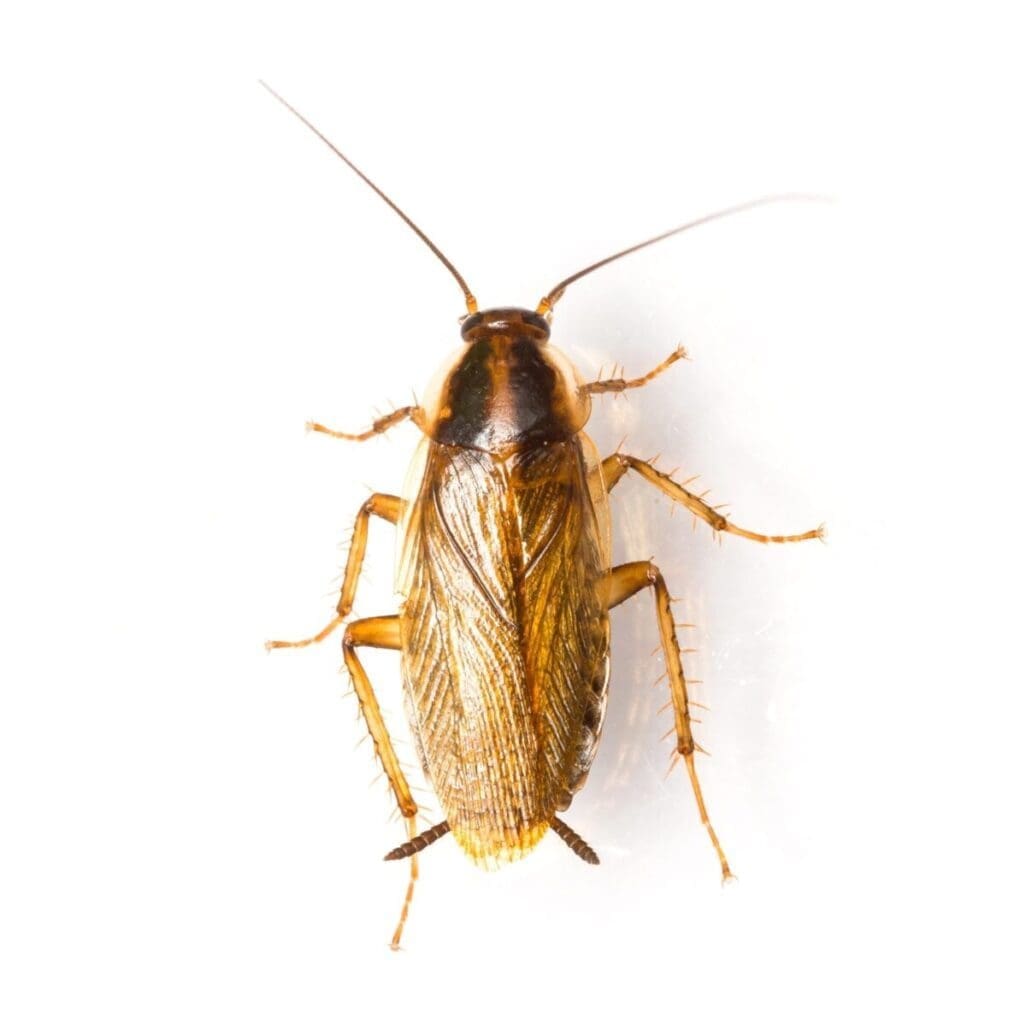
German cockroach
1/2″ to 5/8″ long
Light brown to tan, two dark stripes behind head
6 legs, long antennae, winged (rarely fly)
What do I look for?
- The presence of live or dead roaches
- Egg shell casings or “specks” (fecal pellets and regurgitated food)
- Pungent and oily odors
- Food products showing signs of pest activity
The smaller German cockroach is the most common variety found in homes and food establishments. Larger Oriental and American cockroaches prefer dark, damp areas such as basements, floor drains, crawl spaces and utility closets.
Many people are allergic to cockroaches, so sneezing, coughing or symptoms of asthma can also be an indication of their presence. Because cockroaches are generally most active at night or in the dark, it is often difficult to determine whether a problem exists.Cockroach bites are incredibly rare but may occur in some extremely severe cases.
If you have a sample of an insect you think might be a cockroach, you can submit a specimen to our Pest ID Center, weekdays from 8:30am to 6:00pm.
MMPC Cockroach Solutions
MMPC offers comprehensive plans to eliminate roaches from interior and exterior environments.
Our external control plan consists of:
- Bi-weekly perimeter control
- Monthly perimeter baiting
- Quarterly perimeter baiting
Our internal control plan includes:
- Initial knockdown and control
- Bi-weekly inspections and maintenance
- Monthly inspections and maintenance
If you suspect that you might have roaches or are at risk, we can arrange for an MMPC certified specialist to inspect your premises, weekdays between the hours of 8:00am to 4:00pm.
What are rodents?
Rodents are mammals with sharp incisors used to gnaw wood, break into food, and bite predators. They eat seeds or plants, though some types have more varied diets.
Rodents are nocturnal creatures, spreading diseases (such as salmonella and tuberculosis) by contaminating food intended for human consumption, and causing damage to buildings and property by gnawing and burrowing into structures.
The term “rodent” encompasses both mice and rats. Mice are commonly found in interior environments and can live for up to 18 months. They range in length from 5 to 8 inches and can weigh up to 1 ounce. Female mice can produce 36 to 192 offspring per year.
Rats, specifically the Norway Rat, are commonly found in urban and suburban areas of North America. They range in length from 13 to 18 inches and can weigh up to 11 ounces. Females can produce 35 to 85 offspring annually.

House mice
2 1/2″ to 3 3/4″ long
Dusty gray to brown
Long naked tail, small rounded ears, pointed snout
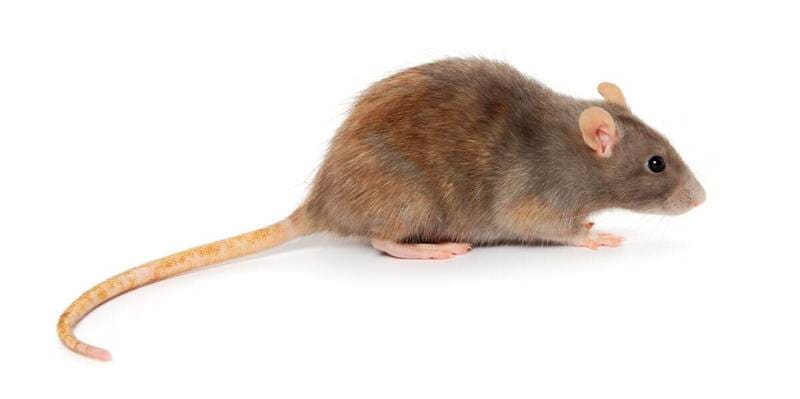
Norway rats
8″ long (nose to base of tail)
Gray or brown/black mix
Long scaly tail, large ears
What do I look for?
- The presence of fecal matter (“droppings”)
- The presence of live or dead rodents
- Visible signs of destruction to buildings and other property (such as food items)
If you suspect the presence of rodents, taking action quickly can stop the problem from getting worse. If possible, try to identify how these pests are entering your space and where they may be nesting. Rodents can often be found in or near the kitchen, which provides them with food sources and entry points around utility lines or behind appliances.
MMPC Rodent Solutions
The best way to eliminate a rodent infestation is to stop them from entering your space. Even if you have determined that you have an existing rodent problem, exclusion will still provide the best long-term solution. MMPC’s Rodent Proofing Program Teams will inspect, treat and seal openings around utility lines and service conduits — such as water pipes, electric wires, air conditioning units, drain pipes and vents — and will check for broken windows and unscreened vents.
Our Rodent Proofing Team is available for on-site inspections or other treatment needs weekdays from 9:00am to 4:00pm.
What are termites?
Termites are insects that feed on dead plant materials, such as wood, leaf litter, soil or animal dung. Ten percent of the estimated 4,000 species of termites cause serious structural damage to buildings, crops or plantation forests.
Termites are social insects that live in underground colonies. A termite colony has 3 castes: workers, soldiers and winged “swarmers.”
During late winter or early spring, the winged swarmers emerge from the ground, attracted to light, and form large, dense groups to mate and start new colonies. While swarmers are not destructive, if they form a new colony, the resulting workers will feed on wood and can cause severe structural damage.
A colony’s king and queen can live for 10 to 30 years, while workers have a 2 year lifespan.

Workers
1/8″ to 1/4″ long
Pale/white
Soft-bodied, generally smaller than Soldiers
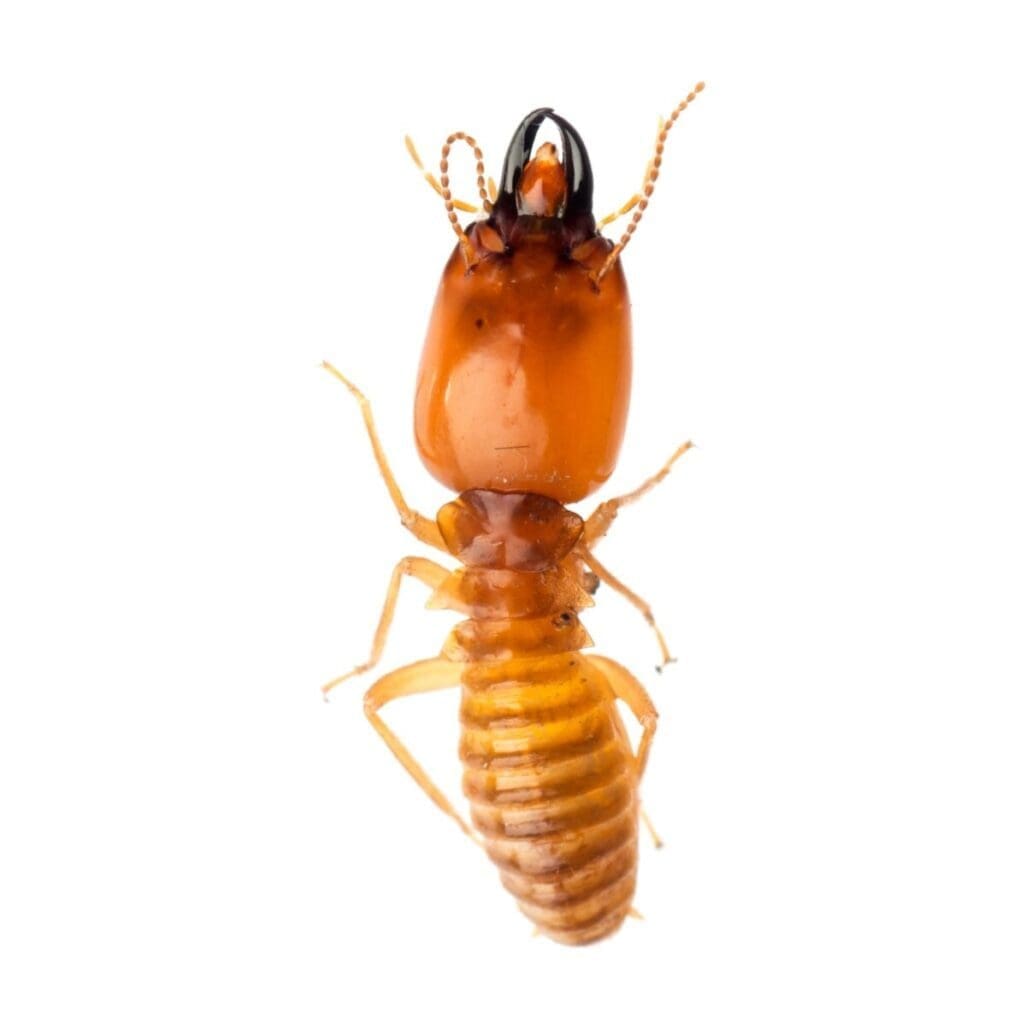
Soldiers
1/4″ to 3/8″ long
Cream-colored to amber
6 legs, elongated dark heads with large dark jaws

Swarmers
3/8″ to 1″ long
Creamy white to light brown
Long non-segmented body, 2 sets of wings (not visible when at rest)
What do I look for?
- Visible signs of wood damage
- The presence of live or dead termites
- Evidence of nests, mounds and mud tubes (small tunnels)
At first glance, termites can be confused with ants, since they are similar in size and appearance. Termites generally inhabit the ground floor or basement/subterranean levels of a building.
If you observe termite-like pests on a higher level of a building, it is likely that you have a different type of pest problem.
If you have samples of insects that you suspect might be termites, Our MMPC Pest ID Center can identify the pest, weekdays from 8:30am to 6:00pm.
MMPC Termite Solutions
Because of the dynamic nature of this pest, there are a variety of treatments and termiticides available. Proper termite treatment depends on the type of building construction and severity of the infestation. Termite treatment must be administered correctly and carefully to achieve proper protection and effective results.
Our services include:
- Termite inspection
- Perimeter liquid treatment
- Borate wood protection treatment
- Baiting program
If you suspect that you might have termites or are at risk, our inspectors are available for on-site inspections on weekdays, from 8:00am to 4:00pm.
